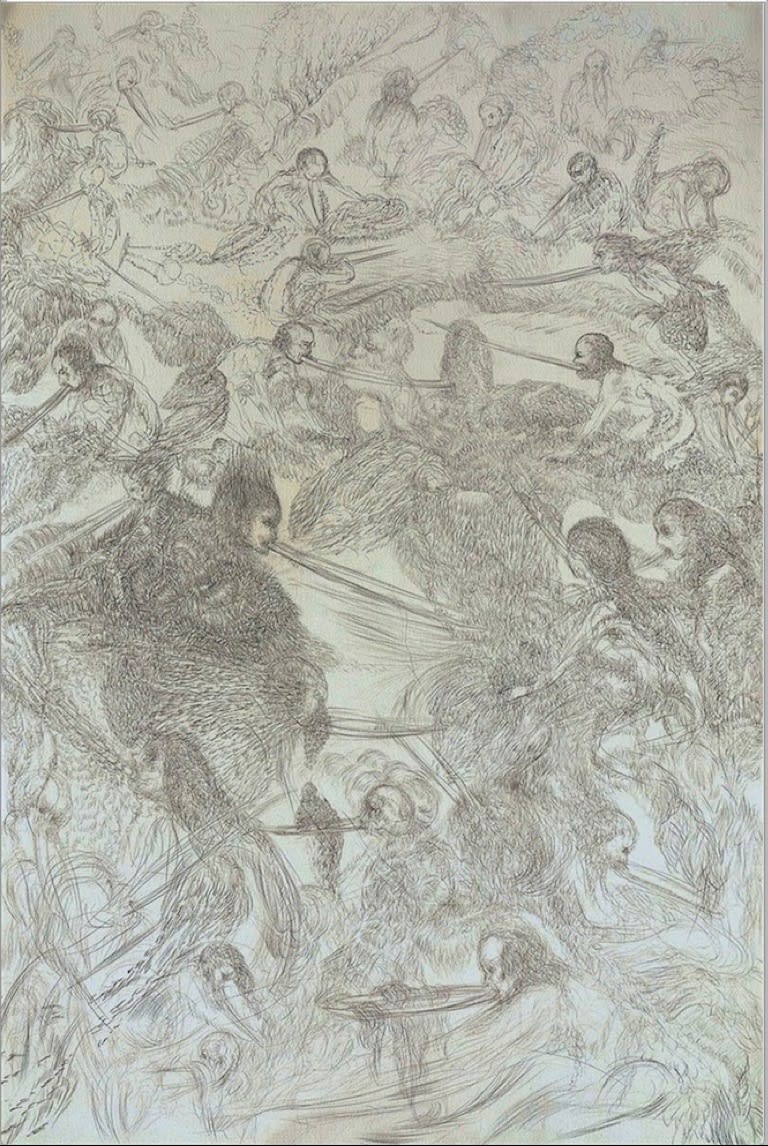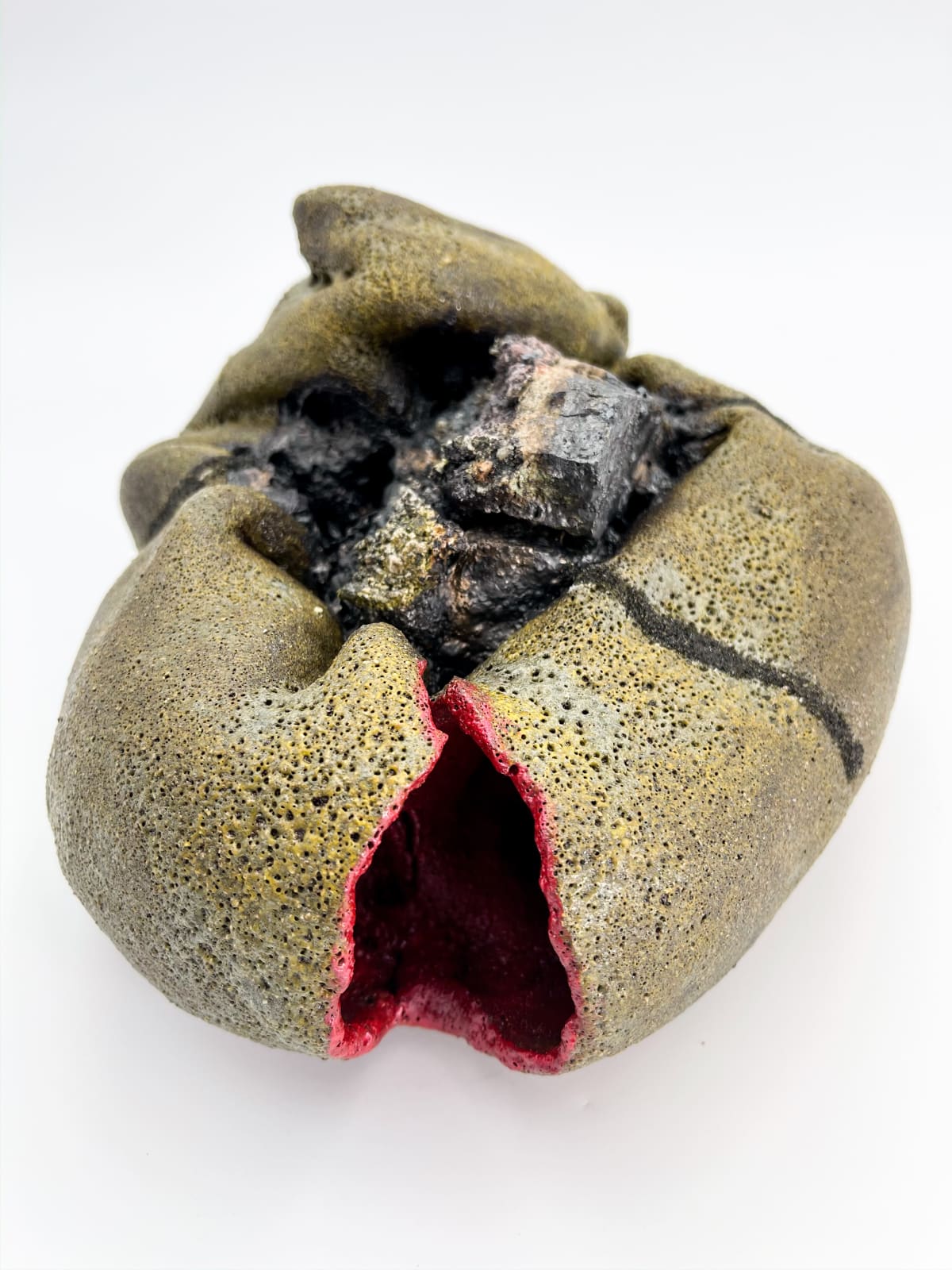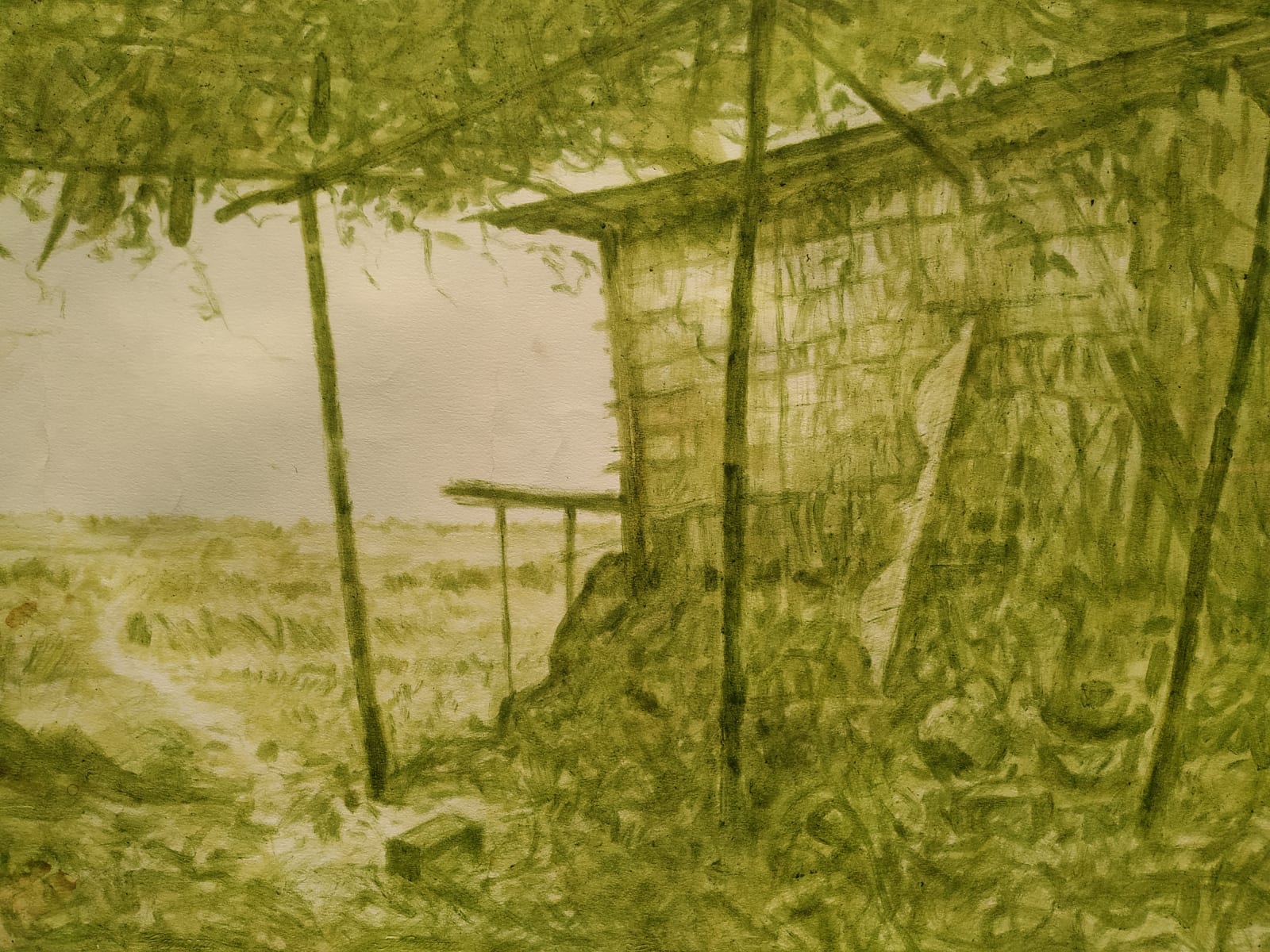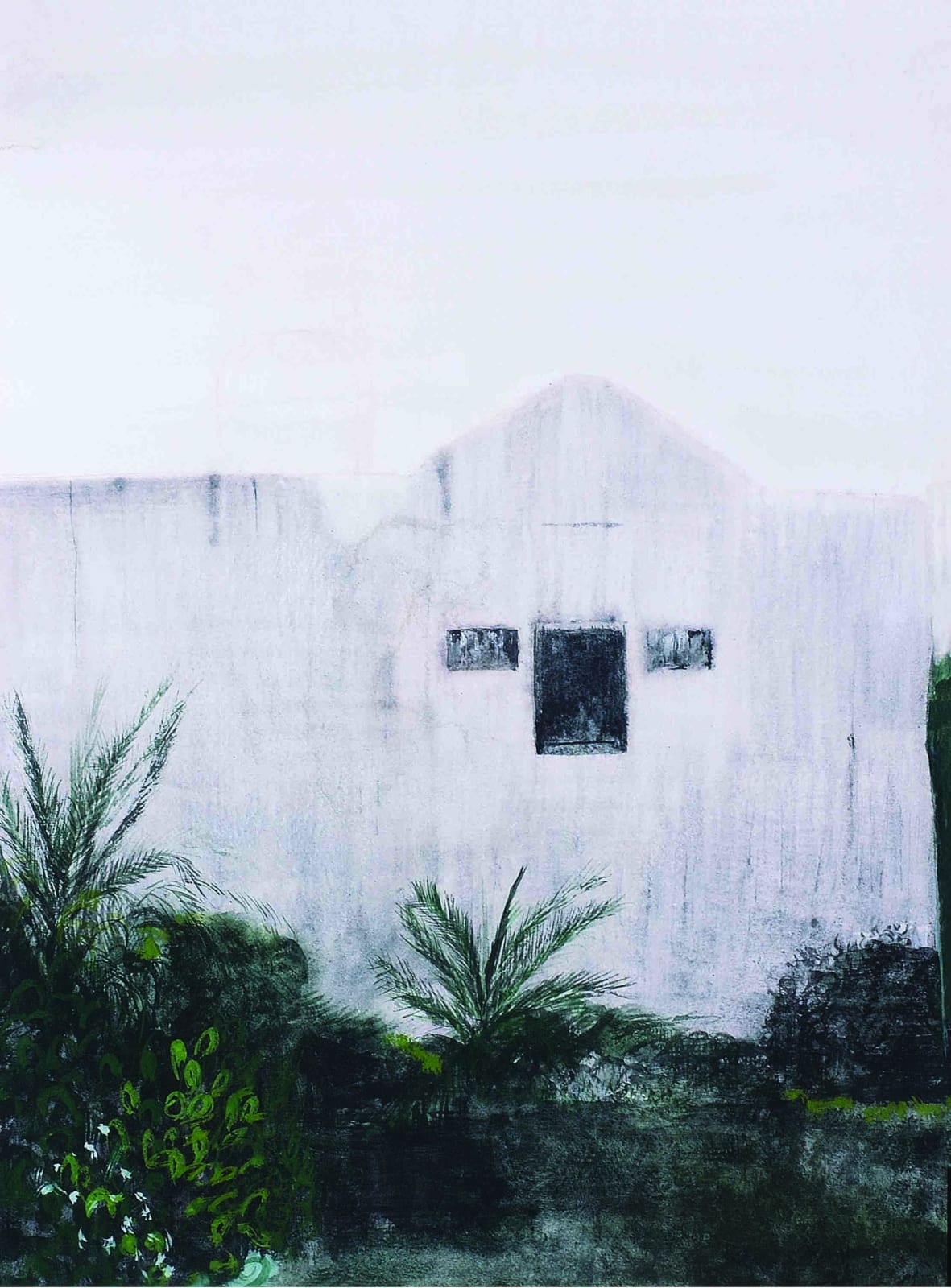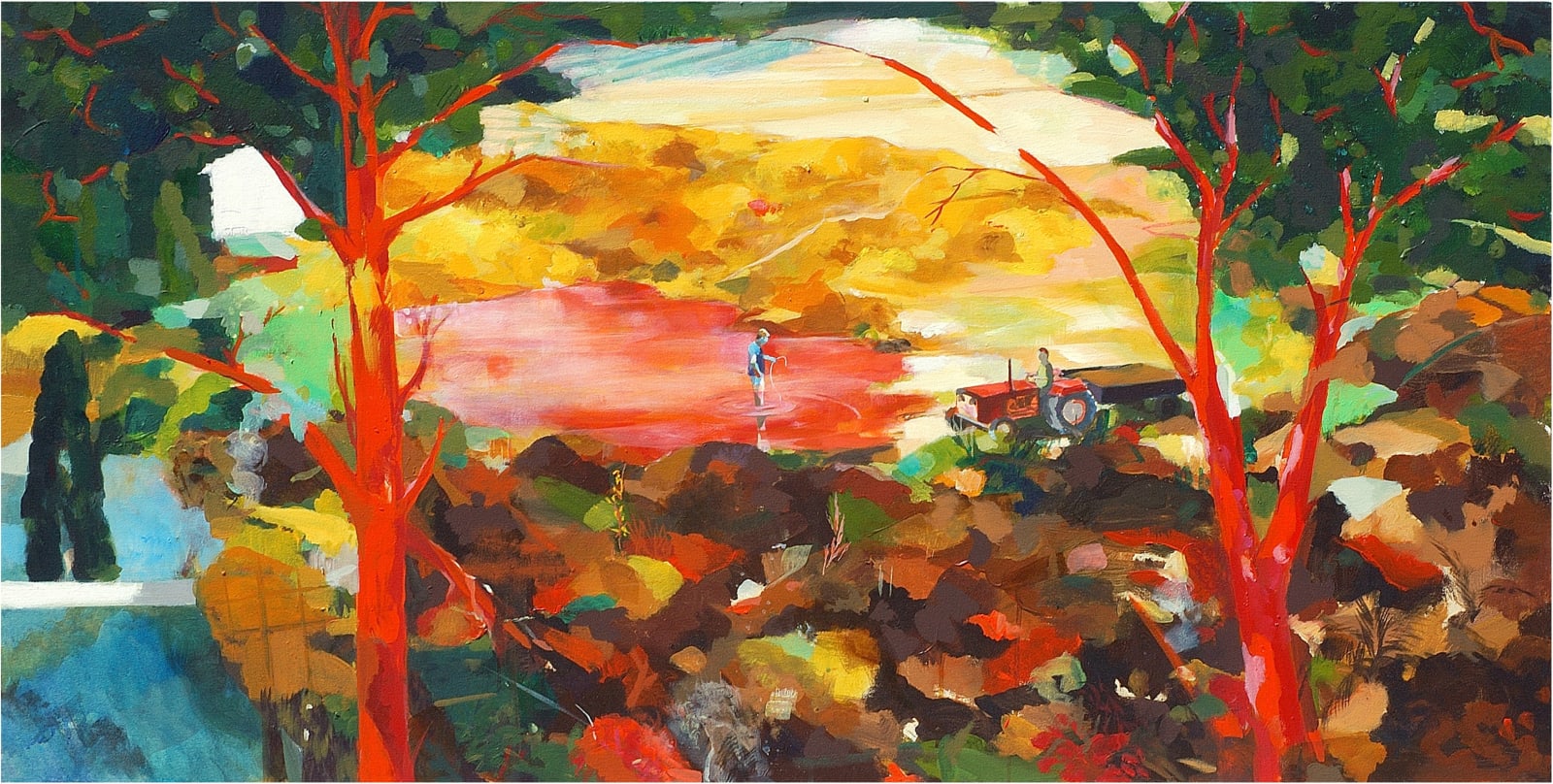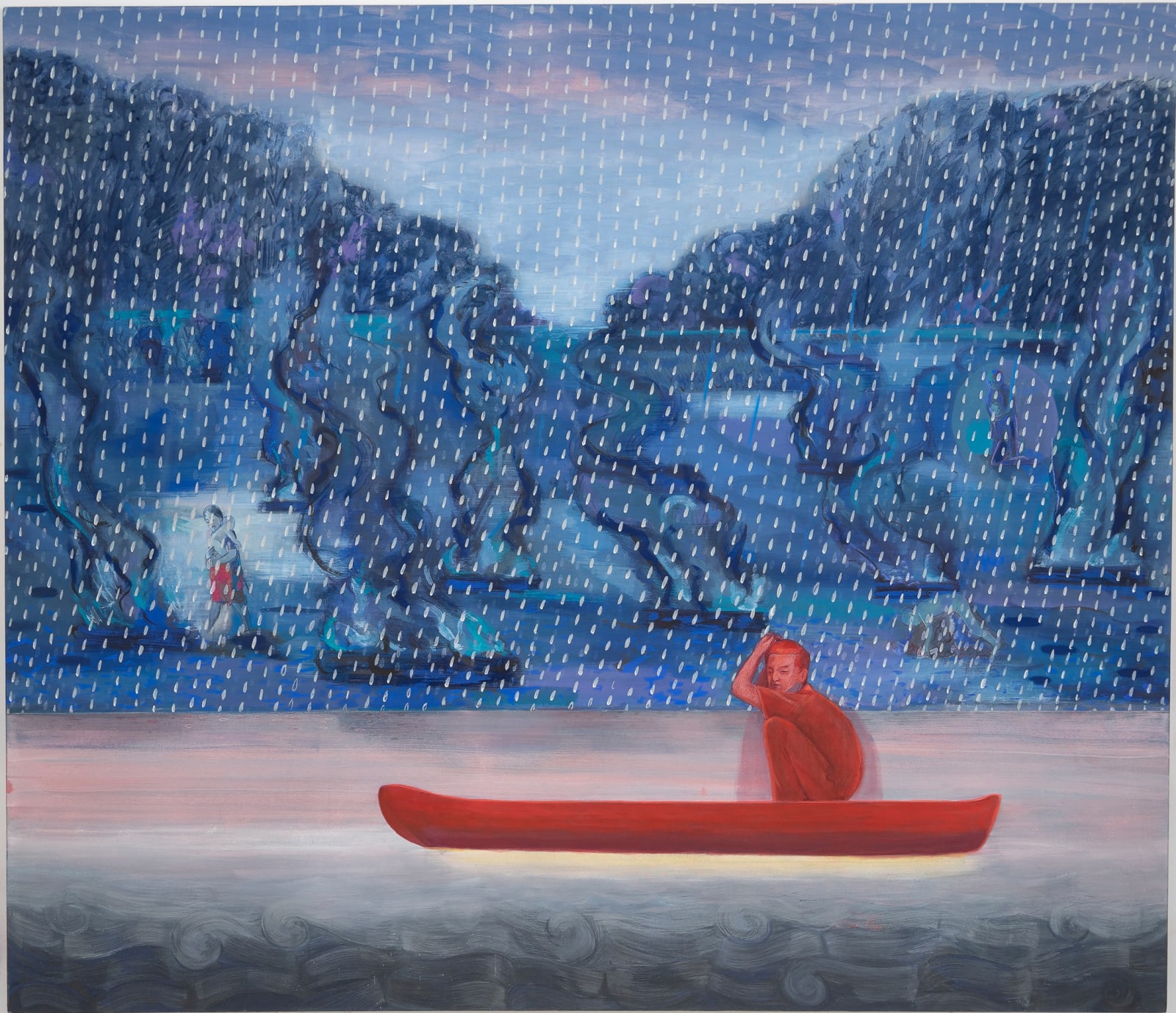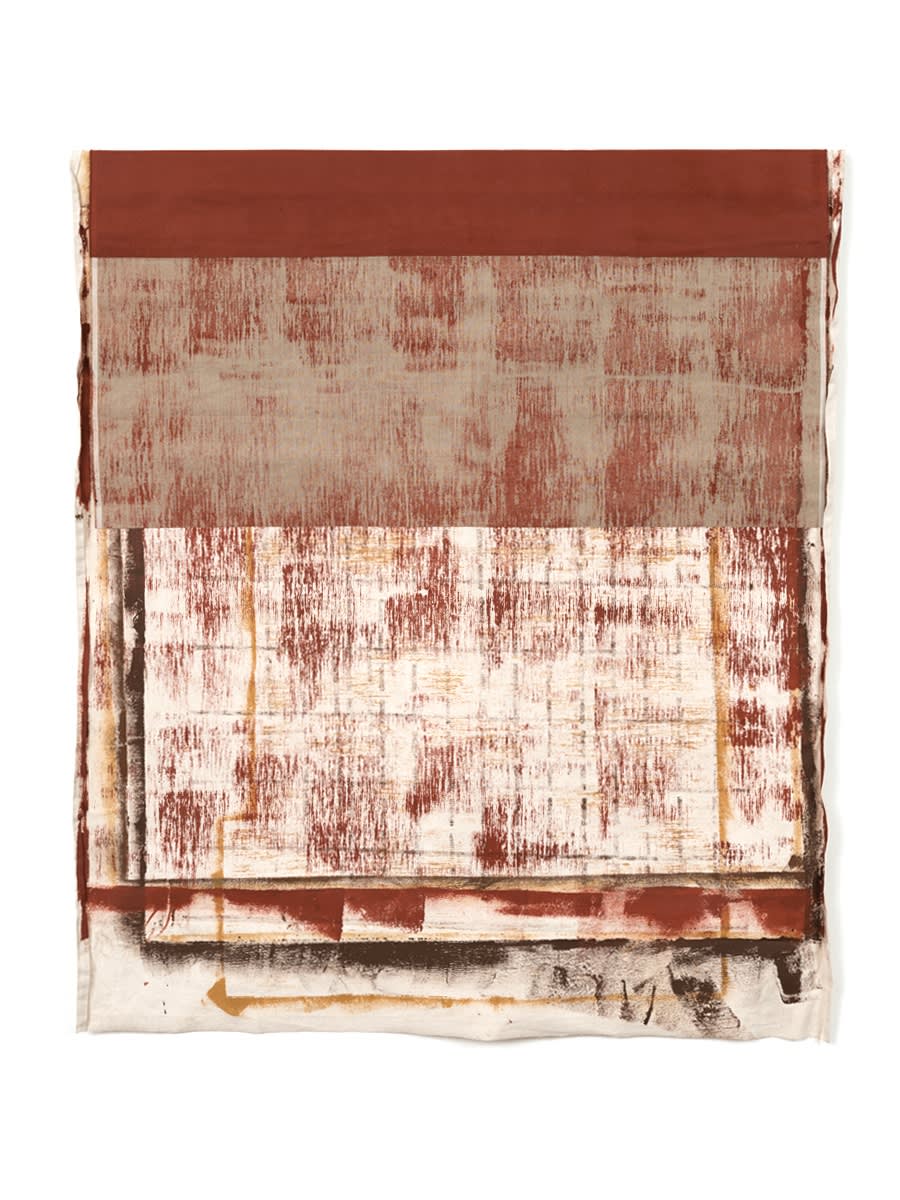Projec t88 presents a collection of works that evoke the act of performing memory, enacting it through materiality. Painterly actionism aids in the processes of recreating memory; the unfolding of the traces are revealed through the energetic physicalities of impasto, potent pigments, while filmic and elusive layers of casein and clay embody the organic.
In her Lahore series paintings, Risham Syed chooses the neglected rears of new buildings in the middle class residential quarters with neatly done facades and unfinished backwalls. She culls out pieces from the past- the palm trees, the foliage, or a broken piece of an earlier wall appear as relics. These works are small and exist somewhere between a post-card and a miniature painting. Their scales are intimate, speaking of the personal memories which the artist and the audience carry as souvenirs or mementoes.
Places are not locations but sites for Mahesh Baliga, revealing curious cases which he views askance. The dilemmas of the painter as a painter, and painter as a person often appear together; like that of taking sides with the emerging contemporary narratives. The medium of casein which connects him to an earlier practice of painting points to the idea of the memory of a material, taking recourse to past events to reimagine the present.
Dharmendra Prasad remembers sites through the trees, fields, soil and the wind. The home and studio become immaterial and reside as a memory. This act of transformation takes place on the paper where it is recreated. People of that place, the residence, collective labour, plants, aromas… all things that make the location enter the structure of memory, filtered in monochromes.
In Amitesh Shrivastava’s paintings. forms burst forth, assuming different role plays, making their way with an energy that is exuberantly animated. The brush marks take root in different canvases as aspiring seeds, bursting from the ground and looking for new planes to expand to, like the plastic pigments used. The canvas opens up both as a space and surface of psychic and emotive register.
Neha Choksi’s new works expand the geological understanding of terra, where pigment and rock confront the same temporalities. The process which the artist uses is a kind of actionism where the work embeds the physicality of the material as well as the intellectual process of making. Terra as material hints at the ephemerality of things taking the viewer to uncertain terrains of making and unmaking the self, a self which is in a flux.
Ashwini Bhat’s work focuses on earthliness, the sensual body, and materiality. The Liquid Earth series reminds us of what we stand on - both physically and ethically. These kinetic objects possess a performative, gestural memory. They demonstrate themselves in process - opening, cracking like the molten earth and like ourselves.
-Dr Aparna Roy Baliga




